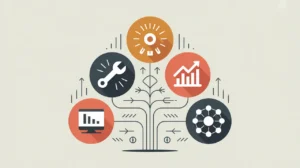Importance of Mainstreaming
Mainstreaming integrates new ideas, practices, or priorities into the core functions of institutions, policies, and cultural norms. It is important because addressing systemic challenges often requires shifting what is considered “normal” across organizations and societies. In development and social innovation, mainstreaming matters because it embeds equity, sustainability, and innovation into everyday practice, ensuring that they are not treated as add-ons or temporary projects.
Definition and Features
Mainstreaming refers to the process of incorporating cross-cutting themes or innovations into the standard operations of institutions and systems. Its defining features include:
- Integration – embedding practices into policies, programs, and budgets.
- Normalization – shifting behaviors and expectations so new approaches become routine.
- Cross-Sector Application – applied across multiple areas, not confined to single projects.
- Equity and Inclusion – often used to advance marginalized priorities (e.g., gender, climate, disability).
- Sustainability – ensures long-term adoption by institutionalizing practices.
How this Works in Practice
In practice, mainstreaming can take the form of gender mainstreaming, where gender equity considerations are built into all aspects of policy and programming, or climate mainstreaming, where environmental sustainability is factored into planning, budgeting, and infrastructure design. Development organizations may mainstream monitoring and evaluation systems, or participatory processes, across all projects. Challenges include superficial adoption, lack of accountability, and resistance from institutions that view mainstreaming as burdensome.
Implications for Social Innovation
Mainstreaming accelerates social innovation by embedding new priorities into the everyday operations of systems. It moves innovations from the margins to the center, ensuring they shape policy, practice, and culture at scale. For practitioners and funders, mainstreaming highlights the importance of building institutional buy-in, creating accountability mechanisms, and ensuring that innovations maintain quality as they become standard. Mainstreaming can help innovations endure and achieve systemic impact.







